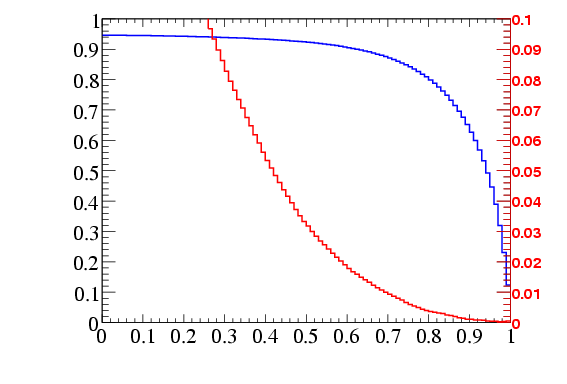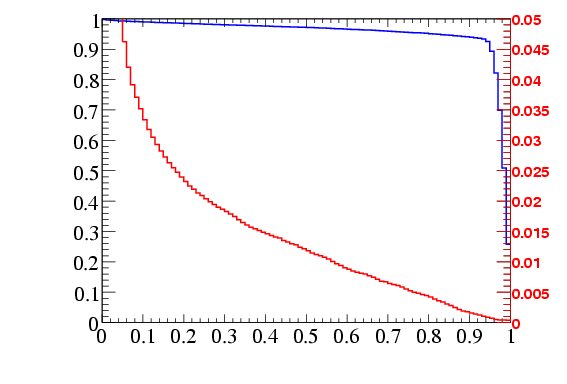
NN
PID (so far)
David Payne
I've put together this short page of conclusions to my NN PID
work so far.
Earlier presentations can be seen here.
There were a couple of open item from last time - adding number of hits
to improve discrimination at low energy (which worked pretty well, used
in the results shown here, cheers ian), and using Yoshi's stipped files
(here)
for a simpler demonstration of performance. I'm using the 30 degree
files (pion-, electron, mu-) and only working with the DS ecal. In all
cases the neural net is trained on events with a flat energy
distribution (to avoid any bias) but the performance plots shown here
use events generated with yoshi's macros. In the plots below I'm
assuming equal initial numbers of mu-/e-/pi-.
Pion Electron Seperation
In the plots below the X axis represents the neural net output. The
blue curve (Y axis, left) shows the electron efficiency for a cut
on nn output of that value, and the red curve (Y axis, right) shows the
the fraction of pions in the selected sample for that cut.
First, without any track info:

Second, with perfect track info:

Muon Electron PID
As a test, I did exactly the same thing with mu-/e- seperation. Seems
to work pretty well. In the plots below the X axis represents the
neural net output. The
blue curve (Y axis, left) shows the electron efficiency for a cut
on
nn output of that value, and the red curve (Y axis, right) shows the
the fraction of muons in the selected sample for that cut. I didn't use
any track info (takes all the fun out of it).



